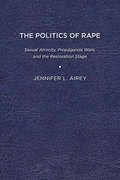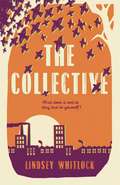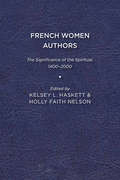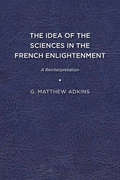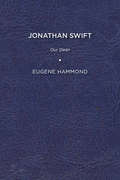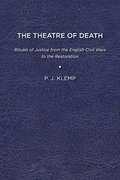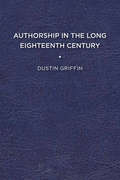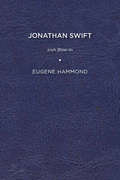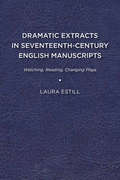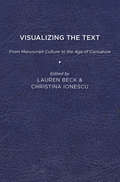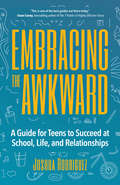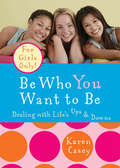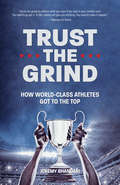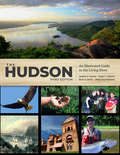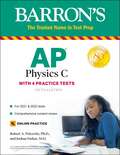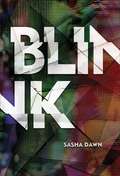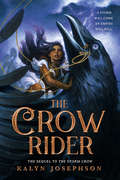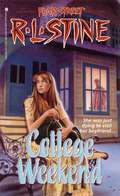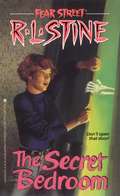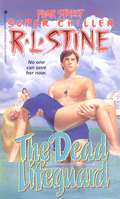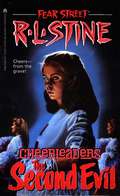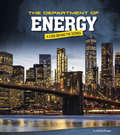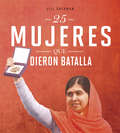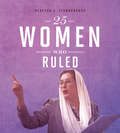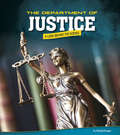- Table View
- List View
The Politics of Rape: Sexual Atrocity, Propaganda Wars, and the Restoration Stage
by Jennifer L. AireyThe Politics of Rape: Sexual Atrocity, Propaganda Wars, and the Restoration Stage is the first full-length study to examine representations of sexual violence on the Restoration stage. By reading theatrical depictions of sexual violence alongside political tracts, propaganda pamphlets, and circulating broadsides, this study argues that authors used dramatic representations of rape to respond to and engage with late-century upheavals in British political culture. Beginning with an examination of rape scenes in English Civil War propaganda, The Politics of Rape argues that Roundhead authors described acts of rape and atrocity to demonize their enemies, the Irish, the Catholics, and the Cavaliers. After the Restoration, propagandists and playwrights on each side of every political conflict would follow suit, altering the rhetoric of sexual violence in response to each new moment of political upheaval: The Restoration of Charles II, the Second and Third Anglo-Dutch Wars, the Popish Plot, the Exclusion Crisis, the Glorious Revolution, and the accession of William and Mary. The study offers an intensive look at British propaganda culture, gathering together a wealth of understudied pamphlet texts, and identifying a series of stock figures that recur throughout the century: The demonic Irishman, sexually violent villain of the 1641 Irish Rebellion tracts; the debauched Cavalier, the secretly Catholic royalist rapist; the poisonous Catholic bride, the malignant consort who encourages the rapes of Protestant women; the cannibal father, the evil patriarch who rapes his daughters-in-laws before ingesting his own sons as a symbol of monarchical overreach; and the ravished monarch, the male rape victim whose sexual violation protests his political disenfranchisement. The study also traces the appearance of these figures on the British stage, examining well-known works by Dryden, Rochester, Behn, Lee, and Shadwell, alongside lesser-known plays by Orrery, Howard, Settle, Crowne, Ravenscroft, Pix, Cibber, and Brady. The Politics of Rape thus offers a new method for understanding of the geo-political implications of theatrical sexual violence. Published by University of Delaware Press. Distributed worldwide by Rutgers University Press.
The Collective
by Lindsey WhitlockA dramatic coming-of-age novel about a boy's divided loyalty: can Elwyn resist the pull of tradition as well as the allure of the new to forge his own path?As spring comes to Badfish Creek, the natural world bursts with life and excitement. But Elwyn is dreaming of a different change, of a place far away that he hasn't yet seen. Lured by urban life and all it has to offer - education, progress and opportunity - he doesn't think twice when his uncle invites him to stay in Liberty, a dazzling city he longs to call home.Yet soon Elwyn realizes that all that glitters is not gold: there is a sinister side to Liberty that he can't ignore, which threatens to erase his old way of life completely. With past and present pitted against one another, the path to Elwyn's future is cast in doubt - for change always comes at a price.
French Women Authors: The Significance of the Spiritual, 1400–2000
by Holly Faith Nelson Katharine Bubel Sinda Vanderpool Deborah Sullivan-Trainor Hadley Wood Kelsey L. Haskett Anne M. François Susan UdryFrench Women Authors examines the importance afforded the spiritual in the lives and works of French women authors over the centuries, thereby highlighting both the significance of spiritually informed writings in French literature in general, as well as the specific contribution made by women writers. Eleven different authors have been selected for this collection, representing major literary periods from the medieval to the (post)modern. Each author is examined in the light of a Christian worldview, creating an approach which both validates and interrogates the spiritual dimension of the works under consideration. At the same time, the book as a whole presents a broad perspective on French women writers, showing how they reflect or stand in opposition to their times. The chronological order of the chapters reveals an evolution in the modes of spirituality expressed by these authors and in the role of spiritual belief or religion in French society over time. From the overwhelmingly Christian culture of the Middle Ages and pre-Enlightenment France to the wide diversity prevalent in (post)modern times, including the rise of Islam within French borders, a radical shift has permeated French society, a shift that is reflected in the writers chosen for this book. Moreover, the sensitivity of women writers to the individual side of spiritual life, in contrast with the practices of organized religion, also emerges as a major trend in this book, with women often being seen as a voice for social and religious change, or for a more meaningful, personal faith. Lastly, despite a blatant rejection of God and religion, spiritual threads still run through the works of one of France’s most celebrated contemporary writers (Marguerite Duras), whose cry for an absolute in the midst of a spiritual vacuum only reiterates the quest for transcendence or for some form of spiritual expression, as voiced in the works of her female predecessors and contemporaries in France, and as demonstrated in this book. Published by University of Delaware Press. Distributed worldwide by Rutgers University Press.
The Idea of the Sciences in the French Enlightenment: A Reinterpretation (G - Reference, Information And Interdisciplinary Subjects Ser.)
by G. Matthew AdkinsThis book traces the development of the idea that the sciences were morally enlightening through an intellectual history of the secrétaires perpétuels of the French Royal Academy of Sciences and their associates from the mid-seventeenth century to the end of the eighteenth century. Academy secretaries such as Fontenelle and Condorcet were critical to the emergence of a central feature of the narrative of Enlightenment in that they encouraged the notion that the “philosophical spirit” of the Scientific Revolution, already present among the educated classes, should guide the necessary reformation of society and government according to the ideals of scientific reasoning. The Idea of the Sciences also tells an intellectual history of political radicalization, explaining especially how the marquis de Condorcet came to believe that the sciences could play central a role in guiding the outcome of the Revolution of 1789. Published by University of Delaware Press. Distributed worldwide by Rutgers University Press.
Jonathan Swift: Our Dean
by Eugene HammondJonathan Swift: Our Dean details the political climax of his remarkable career—his writing and publication of The Drapier’s Letters (1724), Gulliver’s Travels (1726), and A Modest Proposal (1729)—stressing the relentless political opposition he faced and the numerous ways, including through his sermons, that he worked from his political base as Dean of St. Patrick’s Cathedral, psychologically as well as physically just outside the Dublin city walls, to attempt to rouse the Irish people to awareness of the ways that England was abusing them. This book faces squarely the likelihood that Swift had a physical affair with Esther Vanhomrigh between 1719 and 1723, and reassesses in the light of that likelihood his conflicting relations with Esther Vanhomrigh and Esther Johnson. It traces the many loving friendships with both men and women in Ireland that sustained Swift during the years when his health gradually failed him, enabling him to continue indefatiguably, both through his writings and his authority as Dean of St. Patrick’s, to contribute to the public welfare in the face of relentless British attempts to squeeze greater and greater profits out of their Irish colony. Finally, it traces how Swift’s political indignation led to his treating many people, friends and enemies, cruelly during the 1730s, even while his humor and his ability to make and attract new friends sustained themselves until his memory finally failed him in 1742. This biography, in two books, Jonathan Swift: Irish Blow-in and Jonathan Swift:Our Dean, comes closer than past biographies to capturing how it felt to Swift himself to live his life. Published by University of Delaware Press. Distributed worldwide by Rutgers University Press.
The Theatre of Death: Rituals of Justice from the English Civil Wars to the Restoration (G - Reference, Information And Interdisciplinary Subjects Ser.)
by P J KlempThis book discusses some rituals of justice—such as public executions, printed responses to the Archbishop of Canterbury’s execution speech, and King Charles I’s treason trial—in early modern England. Focusing on the ways in which genres shape these events’ multiple voices, I analyze the rituals’ genres and the diverse perspectives from which we must understand them. The execution ritual, like such cultural forms as plays and films, is a collaborative production that can be understood only, and only incompletely, by being alert to the presence of its many participants and their contributions. Each of these participants brings a voice to the execution ritual, whether it is the judge and jury or the victim, executioner, sheriff and other authorities, spiritual counselors, printer, or spectators and readers. And each has at least one role to play. No matter how powerful some institutions and individuals may appear, none has a monopoly over authority and how the events take shape on and beyond the scaffold. The centerpiece of the mid-seventeenth-century’s theatre of death was the condemned man’s last dying utterance. This study focuses on the words and contexts of many of those final speeches, including King Charles I’s (1649), Archbishop William Laud’s (1645), and the Earl of Strafford’s (1641), as well as those of less well known royalists and regicides. Where we situate ourselves to view, hear, and comprehend a public execution—through specific participants’ eyes, ears, and minds or accounts—shapes our interpretation of the ritual. It is impossible to achieve a singular, carefully indoctrinated meaning of an event as complex as a state-sponsored public execution. Along with the variety of voices and meanings, the nature and purpose of the rituals of justice maintain a significant amount of consistency in a number of eras and cultural contexts. Whether the focus is on the trial and execution of the Marian martyrs, English royalists in the 1640s and 1650s, or the Restoration’s regicides, the events draw on a set of cultural expectations or conventions. Because rituals of justice are shaped by diverse voices and agendas, with the participants’ scripts and counterscripts converging and colliding, they are dramatic moments conveying profound meanings. Published by University of Delaware Press. Distributed worldwide by Rutgers University Press.
Authorship in the Long Eighteenth Century
by Dustin GriffinThis book deals with changing conditions and conceptions of authorship in the long eighteenth century, a period often said to have witnessed the birth of the modern author. It focuses not on authorial self-presentation or self-revelation but on an author’s interactions with booksellers, collaborators, rivals, correspondents, patrons, and audiences. Challenging older accounts of the development of authorship in the period as well as newer claims about the “public sphere” and the “professional writer,” it engages with recent work on print culture and the history of the book. Methodologically eclectic, it moves from close readings to strategic contextualization. The book is organized both chronologically and topically. Early chapters deal with writers – notably Milton and Dryden – at the beginning of the long eighteenth century, and later chapters focus more on writers — among them Johnson, Gray, and Gibbon — toward its end. Looking beyond the traditional canon, it considers a number of little-known or little-studied writers, including Richard Bentley, Thomas Birch, William Oldys, James Ralph, and Thomas Ruddiman. Some of the essays are organized around a single writer, but most deal with a broad topic – literary collaboration, literary careers, the republic of letters, the alleged rise of the “professional writer,” and the rather different figure of the “author by profession.” Published by University of Delaware Press. Distributed worldwide by Rutgers University Press.
Jonathan Swift: Irish Blow-In
by Eugene HammondJonathan Swift: Irish Blow-in covers the arc of the first half of Jonathan Swift’s life, offering fresh details of the contentment and exuberance of his childhood, of the support he received from his grandmother, of his striking affection for Esther Johnson from the time she was ten years old (his pet name for her in her twenties was “saucebox”), of his precocious entry into English politics with his Contests and Dissensions pamphlet, of his brilliant and much misunderstood Tale of a Tub, and of his naive determination to do well both as a vicar of the small parish of Laracor in Ireland and as a writer for the Tory administration trying to pull England out of debt by ending the war England was engaged in with France. I do not share with past biographers the sense that Swift had a deprived childhood. I do not share the suspicion that most of Swift’s enmities were politically motivated. I do not feel critical of him because he was often fastidious with his money. I do not think he was insincere about his religious faith. His pride, his sexual interests, his often shocking or uninhibited language, his instinct for revenge – emphasized by many previous biographers – were all fundamental elements of his being, but elements that he either used for rhetorical effect, or that he tried to keep in check, and that he felt that religion helped him to keep in check. Swift had as firm a conviction as did Freud that we are born with wayward tendencies; unlike Freud, though, he saw both religion and civil society as necessary and helpful checks on those wayward tendencies, and he (frequently, but certainly not always) acknowledged that he shared those tendencies with the rest of us. This biography, in two books, Jonathan Swift: Irish Blow-in and Jonathan Swift: Our Dean, will differ from most literary biographies in that it does not aim to show how Swift’s life illuminates his writings, but rather how and why Swift wrote in order to live the life he wanted to live. I have liberally quoted Swift’s own words in this biography because his inventive expression of ideas, both in his public works and in his private letters, was what has made him a unique and compelling figure in the history of literature. I hope in these two books to come closer than past biographies to capturing how it felt to Swift himself to live his life. Published by University of Delaware Press. Distributed worldwide by Rutgers University Press.
Dramatic Extracts in Seventeenth-Century English Manuscripts: Watching, Reading, Changing Plays
by Laura EstillThroughout the seventeenth century, early modern play readers and playgoers copied dramatic extracts (selections from plays and masques) into their commonplace books, verse miscellanies, diaries, and songbooks. Dramatic Extracts in Seventeenth-Century English Manuscripts: Watching, Reading, Changing Plays is the first to examine these often overlooked texts, which reveal what early modern audiences and readers took, literally and figuratively, from plays. As this under-examined archival evidence shows, play readers and playgoers viewed plays as malleable and modular texts to be altered, appropriated, and, most importantly, used. These records provide information that is not available in other forms about the popularity and importance of early modern plays, the reasons plays appealed to their audiences, and the ideas in plays that most interested audiences. Tracing the course of dramatic extracting from the earliest stages in the 1590s, through the prolific manuscript circulation at the universities, to the closure and reopening of the theatres, Estill gathers these microhistories to create a comprehensive overview of seventeenth-century dramatic extracts and the culture of extracting from plays. Dramatic Extracts in Seventeenth-Century English Manuscripts: Watching, Reading, Changing Plays explores new archival evidence (from John Milton’s signature to unpublished university plays) while also analyzing the popularity of perennial favorites such as Shakespeare’s The Tempest. The study of dramatic extracts is the study of particulars: particular readers, particular manuscripts, particular plays or masques, particular historic moments. As D. F. McKenzie puts it, “different readers [bring] the text to life in different ways.” By providing careful analyses of these rich source texts, this book shows how active play-viewing and play-reading (that is, extracting) ultimately led to changing the plays themselves, both through selecting and manipulating the extracts and positioning the plays in new contexts. Published by University of Delaware Press. Distributed worldwide by Rutgers University Press.
Visualizing the Text: From Manuscript Culture to the Age of Caricature
by Janine Rogers Rachel Schmidt Cecilia Brain Lauren Beck Michiel Van Groesen Ann Lewis Sandra Sáenz-López Pérez Swann Paradis David McCallam Antoine EcheThis volume presents in-depth and contextualized analyses of a wealth of visual materials. These documents provide viewers with a mesmerizing and informative glimpse into how the early modern world was interpreted by image-makers and presented to viewers during a period that spans from manuscript culture to the age of caricature. The premise of this collection responds to a fundamental question: how are early modern texts, objects, and systems of knowledge imaged and consumed through bimodal, hybrid, or intermedial products that rely on both words and pictures to convey meaning? The twelve contributors to this collection go beyond traditional lines of inquiry into word-and-image interaction to deconstruct visual dynamics and politics—to show how images were shaped, manipulated, displayed, and distributed to represent the material world, to propagate official and commercial messages, to support religious practice and ideology, or to embody relations of power. These chapters are anchored in various theoretical and disciplinary points of departure, such as the history of collections and collecting, literary theory and criticism, the histories of science, art history and visual culture, word-and-image studies, as well as print culture and book illustration. Authors draw upon a wide range of visual material hitherto insufficiently explored and placed in context, in some cases hidden in museums and archives, or previously assessed only from a disciplinary standpoint that favored either the image or the text but not both in relation to each other. They include manuscript illuminations representing compilers and collections, frontispieces and other accompanying plates published in catalogues and museographies, astronomical diagrams, mixed pictographic-alphabetic accounting documents, Spanish baroque paintings, illustrative frontispieces or series inspired by or designed for single novels or anthologies, anatomical drawings featured in encyclopedic publications, visual patterns of volcanic formations, engravings representing the New World that accompany non-fictional travelogues, commonplace books that interlace text and images, and graphic satire. Geographically, the collection covers imperial centers (Great Britain, France, the Netherlands, and Spain), as well as their colonial periphery (New France; Mexico; Central America; South America, in particular Brazil; parts of Africa; and the island of Ceylon). Emblematic and thought-provoking, these images are only fragments of the multifaceted and comprehensive visual mosaic created during the early modern period, but their consideration has far reaching implications.
Embracing the Awkward: A Guide for Teens to Succeed at School, Life and Relationships
by Joshua RodriguezWin Friends. Build Confidence. Gain Self-esteem."This is one of the best guides out there today." ?Sean Covey, bestselling author of The 7 Habits of Highly Effective TeensMake friends and earn self-confidence by taking awkwardness head on Who are you? As a young adult you struggle with lots of issues?finishing school, finding a career, finding a partner, and most importantly figuring out who you are. That can be overwhelming, especially when you feel like the people all around you have it all figured out. Don’t worry, you don’t have to navigate life alone.Become your best self. Figuring out how to make friends, develop relationships and to be confident is a step-by-step process. Now help is available in Embracing the Awkward, written by the popular teen-advice-YouTuber, The Josh Speaks. This isn’t another dry instructional book written by a boring adult disconnected from the millennial reality, it’s a guide, a workbook, an empowering step towards trying things out, discovering who you are and becoming your best self.Embracing the Awkward gives you ideas for developing your own unique style of speaking and engaging with others. It contains infographics and workbook elements that offer a step-by-step checklist of activities, along with examples of things to say, topics to talk about and ways to lead into situations.Learn how to:Approach peopleLead into conversations with groupsMake strong friendships in schoolApproach your crushes and ask them outDeal with failure and rejectionMaintain family relationshipsYoung adult self-help books such as 7 Habits of Highly Effective Teens, Living With Intensity, The Science of Making Friends, and The Gifted Teen Survival Guide have helped people navigate the teen years and build self-esteem. Now Embracing the Awkward is here to take you to a new level of confidence, self-esteem and success.
Be Who You Want to Be: Dealing with Life's Ups & Downs (Children, Parenting And The Family Ser.)
by Karen CaseyFor a vast majority of girls in this country, there comes an age at which self-esteem, self-assurance, equilibrium, and confidence fly out the window. Maybe it's hormones, maybe it's culture, or maybe it's just called growing up. Whatever the cause, it's real. Some girls turn, in their own fashion, to the same addictive solutions as their elders: compulsive behavior--either in the form of alcohol, drugs, food, or something equally destructive. Casey, a veteran of the "first great revival" of the recovery movement, brings the art of living one day at a time to young girls in Be Who You Want to Be. "My intention in this book is similar to the intent in my other titles: I want to foster hope and willingness in young girls to believe they can make the changes needed so they feel like they belong and have purpose." From the book's opening note to parents (and other adults who care about young girls) through to the final word, the spirit of taking steps for themselves, no matter who they are or where they are in life, comes through in an accessible tone, providing girls the toolkits they need for handling life's ups and downs.
Trust the Grind: How World-Class Athletes Got To The Top
by Jeremy BhandariA Champion State of Grind"A groundbreaking method to illustrate how world-class athletes found their way to the top!" -DJ Shockley, Former Atlanta Falcons QB, Current ESPN College Football Analyst#1 Best Seller in Teen & Young Adult Fitness & ExerciseExclusive interviews with top athletes in sports today. Trust the Grind reveals how these men and women reached the height of their profession.Sixteen athletes from eleven sports. Each chapter tells a different story, as each superstar shares the habit that helped them accomplish their goals and reach the pinnacle of their profession.Sports fanatic or not. Guaranteed to tap into your athletic edge, Trust the Grind, is made for sports fans and nonfans alike. Fans of professional athletes get an in-depth look at their heroes’ climb to the top; those less passionate about sports have the chance to read the secrets of success from some of the most talented people in the world. Both learn pivotal life lessons, and can immediately instill these traits and habits into their lifestyle.A ‘success habit’ point of view. Learn the secrets behind success, and what it takes to remain on top. With Trust The Grind, you will learn about the value that comes with becoming disciplined, staying driven, setting goals, identifying your “why”, staying active and eating right, making sacrifices, obsessing over your passion, and more. Rather than harping on remarkable accolades and astonishing statistics, this story is formulated to teach individuals what it takes to be great in any desired field. It includes interviews with:Jason KiddChipper Jones Terrell OwensPaige VanZantManny PacquiaoMike ModanoJimmie JohnsonGary PlayerDeena KastorRyan ShecklerGeorges St-PierreRyan LochteDevin HesterAndruw JonesLuis GonzalezTim HudsonFans of books like Relentless, Rising Above, The Cost of These Dreams, or Shaken, will enjoy Trust the Grind: Motivational Messages from Ambitious Athletes.
The Hudson: An Illustrated Guide to the Living River
by Stephen P. Stanne Roger G. Panetta Brian E. Forist Maija Liisa NiemistoSince 1996, The Hudson: An Illustrated Guide to the Living River has been an essential resource for understanding the full sweep of the great river's natural history and human heritage. This updated third edition includes the latest information about the ongoing fight against pollution and environmental damage to the river, plus vibrant new full-color illustrations showing the plants and wildlife that make this ecosystem so special. This volume gives a detailed account of the Hudson River’s history, including the geological forces that created it, the various peoples who have lived on its banks, and the great works of art it has inspired. It also showcases the many species making a home on this waterway, including the Atlantic sturgeon, the bald eagle, the invasive zebra mussel, and the herons of New York Harbor. Combining both scientific and historical perspectives, this book demonstrates why the Hudson and its valley have been so central to the environmental movement. As it charts the progress made towards restoring the river ecosystem and the effects of emerging threats like climate change, The Hudson identifies concrete ways that readers can help. To that end, royalties from the sale of this book will go to the non-profit environmental advocacy group Hudson River Sloop Clearwater, Inc.
AP Physics C: With 4 Practice Tests (Barron's Test Prep)
by Robert A. Pelcovits Ph.D. Joshua Farkas M.D.Updated and streamlined to reflect both the Mechanics section and the Electricity and Magnetism section of the most recent AP Physics C course and exam, this new edition presents:One full-length diagnostic test for students to diagnose their strengths and weaknesses on both sections Two full-length practice tests (with sections for Mechanics and Electricity and Magnetism that reflect the actual exam in terms of format, content tested, and level of difficulty) accompanied by fully explained answersOne additional full-length online exam (with sections for Mechanics and Electricity and Magnetism) and fully explained answers for all questionsA comprehensive review of all test topics (including kinematics, Newton&’s laws, simple harmonic motion, universal gravitation, magnetic fields, and much more)Detailed examples and practice questions for all major topicsAn appendix of Physics C equations and constants
Blink
by Sasha DawnSixteen-year-old Josh falls in love with newcomer Chatham Claiborne, who has come to town to find her missing sister, but when Chatham suddenly disappears Josh unearths a web of lies and secrecy surrounding her life, and in doing so unwittingly discovers vital clues to the town's longest unsolved mystery.
The Crow Rider (Storm Crow #2)
by Kalyn JosephsonThe thrilling conclusion to the epic Storm Crow duology that follows a fallen princess as she tries to bring back the magical elemental crows taken from her people.Thia, her allies, and her crow, Res, are planning a rebellion to defeat Queen Razel and Illucia once and for all. Thia must convince the neighboring kingdoms to come to her aid, and Res's show of strength is the only thing that can help her.But so many obstacles stand in her way. Res excels at his training, until he loses control of his magic, harming Thia in the process. She is also pursued by Prince Ericen, heir to the Illucian throne and the one person she can't trust but can't seem to stay away from.As the rebel group prepares for war, Res's magic grows more unstable. Thia has to decide if she can rely on herself and their bond enough to lead the rebellion and become the crow rider she was meant to be.Praise for The Storm Crow:"Clashing kingdoms, thrilling action, and an imperfect heroine make this book a must-read."—ADRIENNE YOUNG, New York Times bestselling author of Sky in the Deep and The Girl the Sea Gave Back"Dragon fans should get ready for their next favorite creature. I loved this."—JESSICA CLUESS, author of A Shadow Bright and Burning
College Weekend: The Cheater; College Weekend; Final Grade (Fear Street #32)
by R L StineAre you afraid to walk down Fear Street? maybe you should be. They say that weird things always happen on that dark and twising road. They say it's a place to be frightened of--that those who go there never return the same. And some never return at all... They says its a place where dark and evil things happen...even under the bright summer sun. Discover how dangerous summer vacation can be in the three FEAR STREET books of this special Collector's Edition!
Secret Bedroom: The Sleepwalker; The Secret Bedroom; Bad Dreams (Fear Street #Bk. 9)
by R L StineLea Carson can't believe it when her family moves into the creepy old house on Fear Street. Most creepy of all is the secret room in the attic, which has been boarded up for 100 years. Lea thinks she hears footsteps inside. Should she open the door?
Dead Lifeguard: Sunburn; Dead Lifeguard; One Evil Summer (Fear Street #Bk. 5)
by R L StineAre you afraid to walk down Fear Street? maybe you should be. They say that weird things always happen on that dark and twisting road. They say it's a place to be frightened of--that those who go there never return the same. And some never return at all...
Second Evil: The First Horror; The Second Horror; The Third Horror (Fear Street #2)
by R L StineCorky Corcoran is trying to forget the nightmare of her sister's death. She's back on the Shadyside cheerleading squad and has made new friends. But a strange man is following her and then the murders begin again. Has the evil spirit from the Fear Street cemetery returned to destroy them?
The Department of Energy: A Look Behind the Scenes (U.S. Government Behind the Scenes)
by Michael BurganDescribes the history of the Department of Energy, and how it has evolved, what the pressing issues are today, and what lies ahead in the near future. Takes a potentially dry topic and makes it accessible for the younger reader. Sidebars highlight important issues and figures in history.
25 mujeres que dieron batalla (Mujeres valientes)
by Jill ShermanDiscover 25 women who challenged the status quo and fought for what they believed in. From all corners of the world, these women show us that barriers are meant to be broken and obstacles can be overcome. Learn about some of the fierce women who persevered in the face of adversity to fight for what they thought was right. Fully translated Spanish text.
25 Women Who Ruled (Daring Women)
by Rebecca StanboroughDiscover 25 women who shattered the glass ceiling, each in their own way. In politics, government, the business world, and more, these women show us that ambition, perseverance, and hard work go a long way.
The Department of Justice: A Look Behind the Scenes (U.S. Government Behind the Scenes)
by Michael BurganDescribes the history of the Department of Justice, and how it has evolved, what the pressing issues are today, and what lies ahead in the near future. Takes a potentially dry topic and makes it accessible for the younger reader. Sidebars highlight important issues and figures in history.
